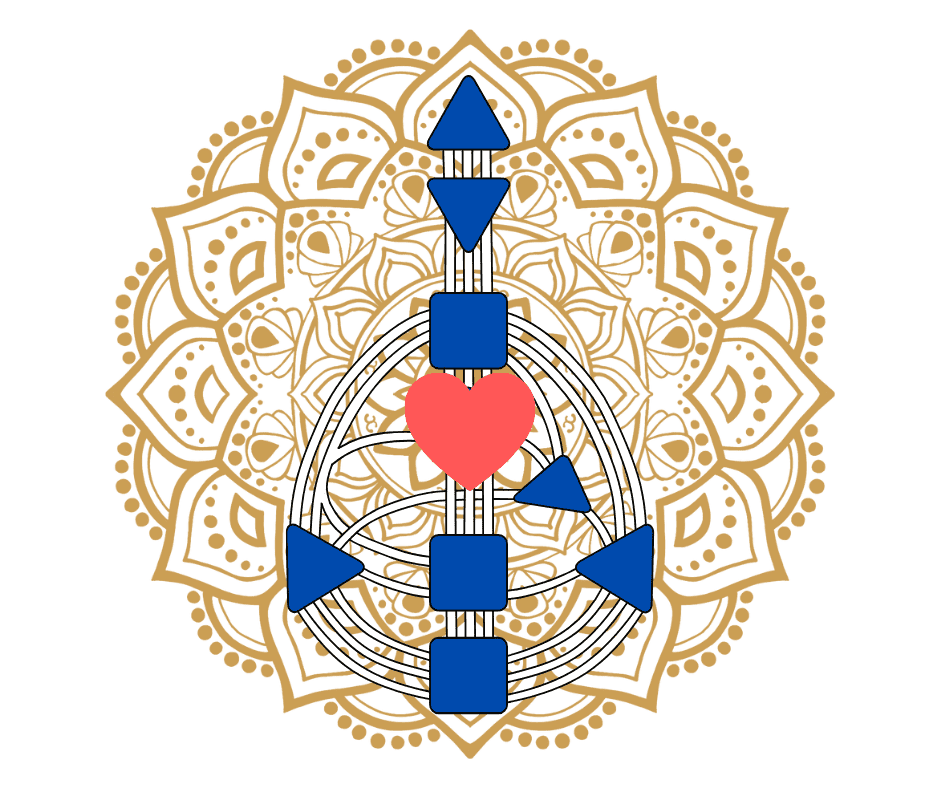The 9 Centers of Human Design
In Human Design, the nine Centers are the building blocks of the BodyGraph. They look like geometric shapes on your chart, and each one represents a specific kind of energy - from how you process emotions to how you think, act, and communicate.
Some Centers in your chart will be colored in (defined) and others will be white (open). Defined Centers show energy you carry consistently. Open Centers show where you take in and amplify energy from others. Together, they create the rhythm of how you experience the world.
Quick Answer:
The nine Centers in Human Design represent different kinds of energy, similar to chakras. Defined Centers are consistent sources of energy. Open Centers are flexible and take in energy from others. Understanding your Centers reveals your strengths and sensitivities.
Why the Centers Matter
The Centers are where Human Design gets personal. They explain why you might feel emotionally steady while someone else feels like they’re on a roller coaster - or why you love making quick decisions while your friend needs time to talk things through.
Defined Centers show what’s reliable in you. Open Centers show where you’re here to learn, adapt, and gain wisdom. Neither is better than the other - both are part of your unique design.
For empaths and highly sensitive people, the Centers are especially revealing. Many empathic experiences come from having open Centers, where you naturally absorb and amplify the energy of those around you.
The Nine Centers at a Glance
Open Centers often explain empath sensitivity.
Head Center = Inspiration
Defined: Consistent source of ideas and questions
Open: Absorbs inspiration from others, easily influenced by outside thoughts
Ajna Center = Conceptualizing
Defined: Reliable way of processing and analyzing information
Open: Flexible perspective, able to see many sides of a situation
Throat Center = Communication
Defined: Consistent way of expressing yourself
Open: Can feel pressure to speak or perform; highly influenced by environment
G Center = Identity & Direction
Defined: Steady sense of self and direction in life
Open: Adaptable identity; can feel pulled in different directions until grounded
Heart/Will Center = Ego & Willpower
Defined: Consistent drive and willpower
Open: Sensitive to issues of self-worth; not built to prove or compete constantly
Sacral Center = Life Force Energy
Defined: Sustainable, powerful work and life force energy
Open: Not built for constant output; learns by experiencing different energies
Solar Plexus = Emotional Center
Defined: Consistent emotional waves that create depth of feeling
Open: Highly empathic, often amplifying others’ emotions
Spleen = Instinct & Intuition
Defined: Reliable intuitive awareness and survival instincts
Open: Sensitive to fears and health influences; learns through environments
Root Center = Pressure & Drive
Defined: Consistent way of handling stress and adrenaline
Open: Easily picks up external pressure; can feel rushed to act
Defined vs. Open: What It Means
Defined Centers are your anchors. They’re what you bring to the table no matter where you are or who you’re with.
Open Centers are your teachers. They’re where you learn flexibility, empathy, and wisdom by sampling different energies.
Neither state is “better.” Defined Centers provide reliability. Open Centers provide growth and awareness. Together, they create the dynamic of your life.
Putting It Into Practice
Think about an open Emotional Center: someone with this openness often feels the moods of others intensely. Instead of wondering, “Why am I so emotional?” they can learn, “I’m sensing what’s around me.” That shift changes everything - from relationships to self-trust.
Or consider a defined Sacral Center: these people have access to steady energy for work and life. When they use it in response to what excites them, they feel deeply satisfied. When they force it, frustration sets in.
By understanding your Centers, you can stop fighting your design and start using it with intention.
Explore More
The Centers are just one layer of your Human Design chart. From here, you may want to:
Learn about your Type, which is based on how your Centers are connected
Human Design for Empaths → Open Centers often explain empath sensitivity.
Strategy & Authority → Your Authority depends on which Centers are defined.
FAQ → Questions about defined vs. open Centers.
If you’d like to explore your own Centers in depth, a Human Design reading can help you see how they show up in your life and relationships.

